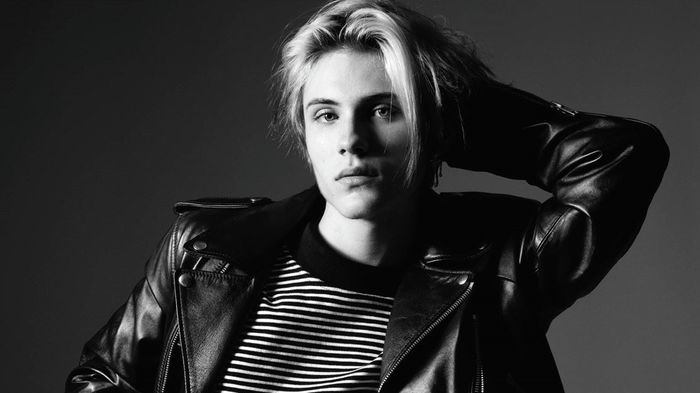Gen Z and the Return of Vintage
Eliane Bedu reflects upon her generation’s enthusiasm for vintage and second-hand fashion shopping, wondering whether it is a lasting trend
I must admit that I am not the most assiduous second-hand buyer. Nonetheless, I cannot deny the growth of vintage fashion within my own generation. Be it the imposed spring cleanings of our wardrobes due to too many lockdowns, the come-back of noughties fashion, or the issue of sustainability, the second-hand market has worked its way into our shopping habits. But is it here to stay?
“With this generation, old is new again; vintage is charismatic”
Gen Z really is the advocate of change when it comes to fashion. With this generation, old is new again. Vintage is charismatic. The personality of every piece charms us. We long for clothes which have lived, and wearing an outfit with its own story empowers us. Olivia Rodrigo proved this by wearing a Chanel 1995 ready-to-wear tweed set to visit the White House, encouraging young people to get vaccinated. Bella Hadid, for her part, looked angelic as she walked this year’s Cannes Festival’s red carpet dressed in a Jean-Paul Gaultier couture gown from 2002. And even we ourselves can imitate the example of these superstars, with all the couture items one can find in thrift shops and on websites such as Vestiaire Collective. Couture is becoming more affordable, while the vintage aspect of it makes us feel closer to the designer.
As much as we like bargain hunting, we also love to take a business-like approach on our Depop and Vinted accounts. We have never felt better than when offering our old clothes a second chance, as if this was an excuse for our latest shopping spree. Even influencers are taking a liking to it, offering to sell part of their wardrobe online. But Vinted, Depop and our local charity shops are not the only place to look for genuine vintage pieces. The closest, cheapest way to acquire second-hand is by storming the wardrobes of family members. And of this, I am an expert. I am one of the lucky ones who share the same measurements as their mother, being able to steal a pair of jeans or a sweater that hasn’t been worn since the 90s. Not only does it reduce my carbon footprint by “shopping” in my own house, but it allows me to wear clothes that have emotional connotations linked to them. And I can assure you that I am not the only one who does this. For her wedding on the 17 July 2020, Princess Beatrice wore one of the Queen’s dresses, which she was last seen wearing in the 1960s. It is a new way to consume fashion, much closer to our hearts.
The numerous historical shows which air on our streaming platforms such as ‘The Queen’s Gambit’, ‘Halston’ or ‘Bridgerton’ have made us nostalgic of the past. And it is through fashion that we are able to relive these aesthetics. Local charity shops are replacing Zara and Nike, targeted for their lack of sustainability and their involvement in the Uighurs’ exploitation, and instead TikTok and Instagram are flooded with thrifting hauls every day. However, even fast-fashion brands are taking a step toward sustainability. Urban Outfitters’ collection Urban Renewal provides genuine vintage and upcycled clothes, putting forward the uniqueness of their items while inciting a greener means of consumption. H&M, comparably, launched H&M Conscious, a line of products with at least 50% recycled fabrics. The brand has additionally made Maisie Williams, the voice activist of her generation, its Global Sustainability Ambassador. The French brand Maje approaches sustainability differently, and offers a product rental service, starting at €20 per day.
This Gen Z-made, more sustainable fashion consumption is very much legitimate, and hopefully the appeal for vintage will not vanish as quickly as it became fashionable. But is this likely to be the case? The vintage market is still very expensive in Europe, and buying pre-loved pieces is sometimes more costly than buying brand new items. American thrifting hauls are making us jealous of the local charity shops selling Burberry bags for a tenner, while with the cycle of fast consumption being broken, a whole industry could collapse.
But for now, second-hand is trendy. It may be because noughties fashion is back stronger than ever, or that the sustainability issue in the fashion industry is a genuine concern of our generation. Perhaps the answer, then, is that less is more. If we reduce the quantity of our fashion consumption, instead filling our wardrobe with a capsule collection of iconic, basic, and timeless items, incorporating elements of vintage or second-hand, we can achieve an effortless (Parisian, if you will) style which will never go out of fashion.
 Comment / Cambridge students are too opinionated 21 April 2025
Comment / Cambridge students are too opinionated 21 April 2025 Interviews / Meet the Chaplain who’s working to make Cambridge a university of sanctuary for refugees20 April 2025
Interviews / Meet the Chaplain who’s working to make Cambridge a university of sanctuary for refugees20 April 2025 News / News in brief: campaigning and drinking20 April 2025
News / News in brief: campaigning and drinking20 April 2025 Comment / Cambridge’s tourism risks commodifying students18 April 2025
Comment / Cambridge’s tourism risks commodifying students18 April 2025 Comment / Does the AI revolution render coursework obsolete?23 April 2025
Comment / Does the AI revolution render coursework obsolete?23 April 2025






